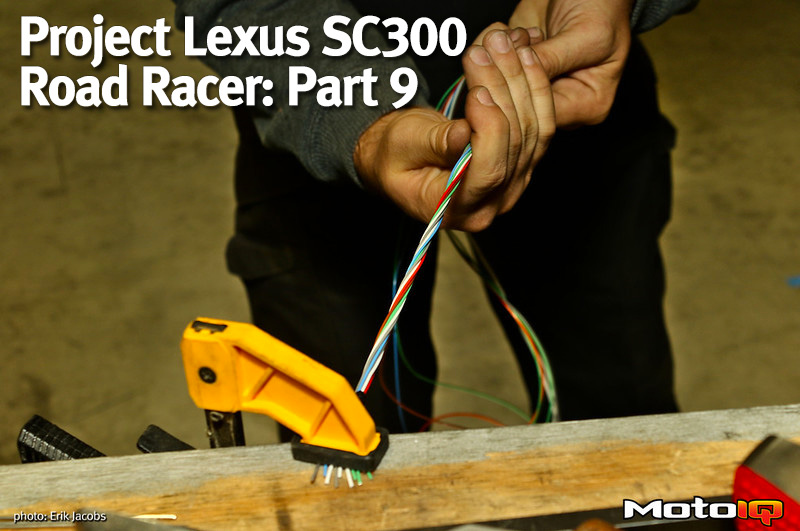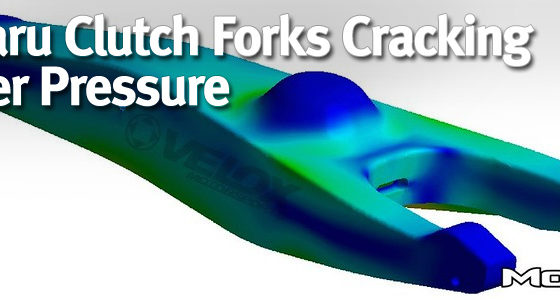,
 A pliers helps form the glueline into two distinct tubes.
A pliers helps form the glueline into two distinct tubes.By holding the glueline with a pliers as it is shrunk, the tube actually glues itself to itself and makes a distinct “Y” junction. Raychem does also sell pre-fabricated heat shrink boots in various routes (Y, T, bends, etc). At $22 PER BOOT, we decided that this was good enough. Don’t sweat the small stuff, right?
 Here is the final booted and shrunk junction. Isn’t it pretty?
Here is the final booted and shrunk junction. Isn’t it pretty?Now that some of the main bundles of the trunk harness were shrunk and booted, it was time to focus on some of the connections. First, the tail lamps.
 Off with its… connector!
Off with its… connector!Since we were connecting to the factory tail lamps, and Toyota used a nice sub-harness already for all of the bulbs, and all the bulb sockets were already attached, and this small sub-harness is still available from Toyota, we just decided to lop off the factory connector and replace it with a Deutsch DTM.
The tail lamps individually draw very little current, and we plan to swap them out for LEDs in the future which will draw next to no current. The DTM connector has more than enough current handling capacity per pin for these bulbs, and the Racepak is going to blink things on its own schedule, so we don’t have to worry about resistors or blinker timing problems once we switch to LEDs.
 There are several wires under the factory Toyota tape. But what’s under the tape that’s still here?
There are several wires under the factory Toyota tape. But what’s under the tape that’s still here?
 This is essentially a correct parallel splice.
This is essentially a correct parallel splice.Toyota combined all of the grounds for the bulbs in the lamp housing to a single ground wire that went into the factory connector. You can see here what a factory parallel splice looks like. A conductive tube has wires inserted into it from both ends, and then the tube is crimped (crushed) onto the wire.
Mechanically speaking, this is a very secure connection. It is easily tested to ensure mechanical soundness. Just pull on the wires really hard. If they come out, you didn’t crimp it well. If they don’t, it’s good!
Electrically speaking, this is also an excellent connection. The parallel splice tube is made out of conductive material. The wires’ insulation is stripped back just far enough to be able to insert the conductors without too much extra hanging out or going past the end of the splice tube.
The only thing missing is protection, and, you guessed it, there’s a special heat shrink for that.



